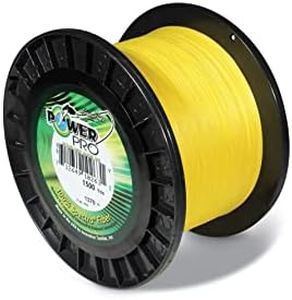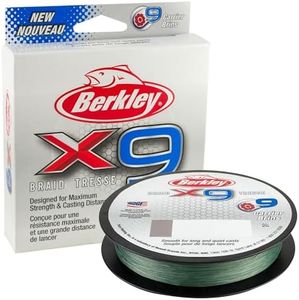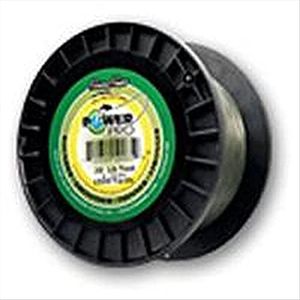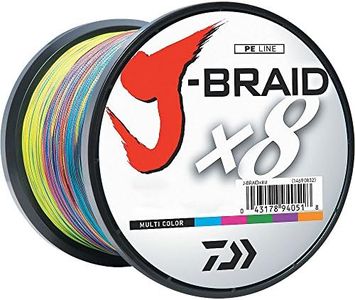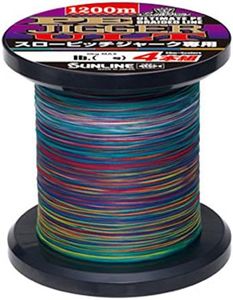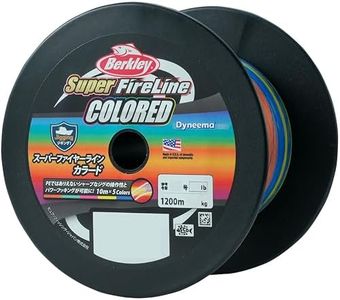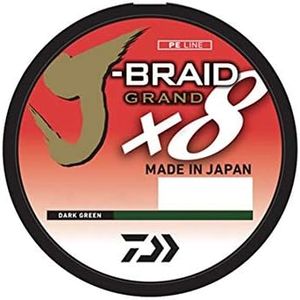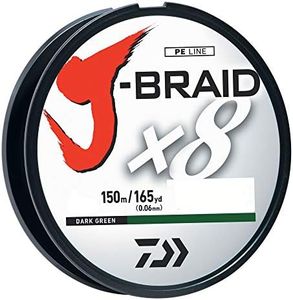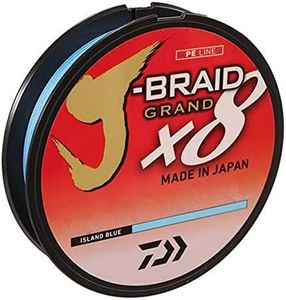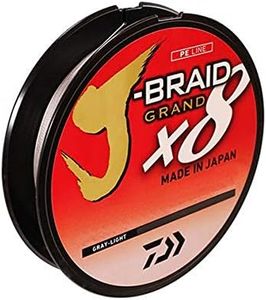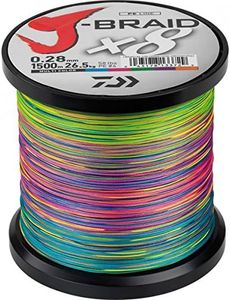We Use CookiesWe use cookies to enhance the security, performance,
functionality and for analytical and promotional activities. By continuing to browse this site you
are agreeing to our privacy policy
10 Best Braided Fishing Lines
From leading brands and best sellers available on the web.Buying Guide for the Best Braided Fishing Lines
Choosing a braided fishing line can greatly impact your fishing experience. Braided lines are popular because they are strong, thin, and have little to no stretch, making them great for certain types of fishing. When picking the right braided line, it is important to understand the main specifications, so you can match your fishing style and target species for the best results.Line Strength (Pound Test)Line strength, often called 'pound test', tells you how much weight the line can handle before breaking. It's important because using a line that's too weak for the fish you're targeting can result in snapped lines and lost catches. Lighter lines (under 15 lbs) are suited for smaller fish like panfish or trout, medium lines (15-30 lbs) for bass or walleye, and stronger lines (over 30 lbs) for big species such as pike, musky, or saltwater fish. To pick the right one, consider the average size of the fish you plan to catch and the environment—thicker cover and rough structure may call for stronger line.
Line DiameterThis refers to how thick the line is. Thinner lines allow you to cast further and fit more line on your reel, but may be less durable against abrasion. Thicker lines are tougher and better at resisting nicks from rocks or logs. Braided lines are generally thinner than other types for the same strength. For long casting or smaller reels, a thinner diameter might be better, while heavier cover or fish with sharp teeth may require a thicker diameter for added protection.
Number of Strands (Carrier Count)Braided lines are made by weaving several strands together. The number of strands, often called carrier count (such as 4, 8, or even 12-strand), affects the feel and performance. Fewer strands (like 4) can be rougher and more abrasive, which helps cut through vegetation. More strands (like 8 or 12) usually mean a rounder, smoother line that casts nicely and is quieter through the guides. If you fish in weedy conditions, a lower carrier count may be better, but if you want smooth casting and less noise, opt for a higher carrier count.
ColorBraided fishing lines come in many colors—high-visibility options help you see bites clearly, while camouflage or moss-green lines blend in better underwater. If you want to spot your line easily (for example, in deep water or when watching for subtle bites), choose a bright color. If fish in your area are line-shy or the water is clear, a natural-colored line can help keep your setup less detectable.
Abrasion ResistanceThis tells you how well the line stands up to scrapes from rocks, logs, and other underwater obstacles. High abrasion resistance is important if you're fishing around lots of structure or sharp objects; it gives you a better chance of landing fish even if the line gets roughed up. If you mostly fish in open water, this may not be as important, but for rivers, lakes with debris, or saltwater areas, choose lines marketed as abrasion-resistant.
SensitivityBraided lines are known for their sensitivity, transmitting even light bites to your hand almost instantly. While most braids are sensitive, some are made to maximize this feel. If you want to detect every nibble, especially for jigging or finesse techniques, prioritize sensitivity. For general use or where immediate bite detection isn't critical, standard braids will suffice.
